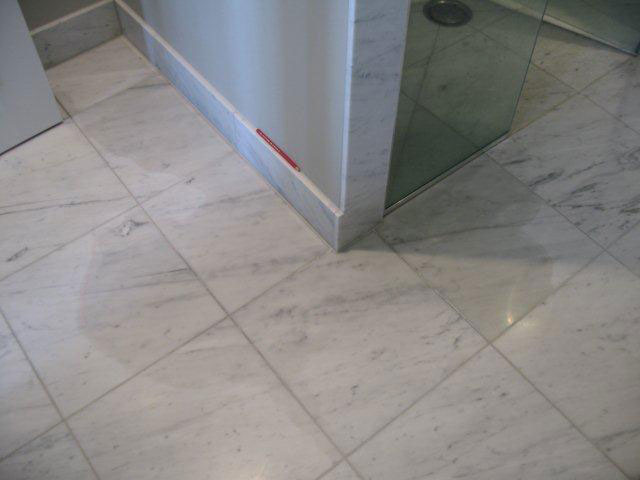Last Updated on May 31, 2019 by Royal Stone Care
Etching: causes and signs
At the end of my recent post on etching, apart from mentioning how rings get etched into your worktop surfaces, I didn’t really give the whole picture of what etching could occur and what it would look like on your marble. So, as promised, this is a follow on from that post.
While wax and other protective coatings used on marble help to make it shine, there are many substances that attack those finishes. Just wiping over it will wear the coatings down molecule by molecule, but it only wears extremely slowly. Other things can work much faster than that though. Obviously, anything hot being placed on it and anything that knocks bangs or chips the surface; but many proprietary kitchen and bathroom cleaners can also cause tremendous damage fairly fast.
Attacks from cleaners
Limescale is the great waterborne enemy of sinks baths, baths, showers and anywhere water is found. So many kitchen and bathroom cleaners proudly display their ability to conquer this limescale problem by dissolving the limescale. The big drawback is that marble is basically made from limestone, so those cleaners will effectively dissolve its surface just like the acid in the manufacturing process I described. The only difference being that instead of lines and grooves being etched, the whole surface is. Those same cleaners are also designed to clean grease and wax away. This means they can also dissolve the protection on your marble too. So be careful of what you use on your marble surfaces.
Now you see it…
There are several ways that you can tell etching has taken place. There could be ring marks or marks where stuff has been lying or spilt and dulled the surface. If you leave anything that contains acid on marble it soon shows. Vinegar from your fish and chips, sauce from your sweet and sour, fizzy drink and wine spillages. Even a piece of citrus fruit, an apple or lemon for instance, could leave a mark. You probably won’t even notice these marks at first as they are so small. It’s not like some alien’s blood where it burns a hole straight through the floor of the spaceship. The damage becomes more apparent when there is a build-up of lots of small etched patches. Your nice shiny surfaces are not so shiny.
Wear and reflections
When it comes to etching on floors, the cause is more likely to be due to wear. The surface protection being ground gently off by footwear over a period of time. The scuffing of shoes making the tiny etching marks plus, in some cases, acid from soil and pavements assisting the wear process. You can see if this has happened by the reflections you get on the marble. How light bounces off the marble, or not, shows up any etching. This applies to tables and worktops too, not just floors. Somewhere on this page is a before and after photograph. In the before photo it still looks like there is a nice reflection of the light and the surface may still appear to have a shine of some level. However, when you compare the after photo, you can see the reflection of the actual light fittings, not just a source of light. It was definitely time to get some maintenance arranged.
Next time I’ll continue with how to go about restoring the shine to your marble and how to help prevent it getting damaged or worn in the first place.

